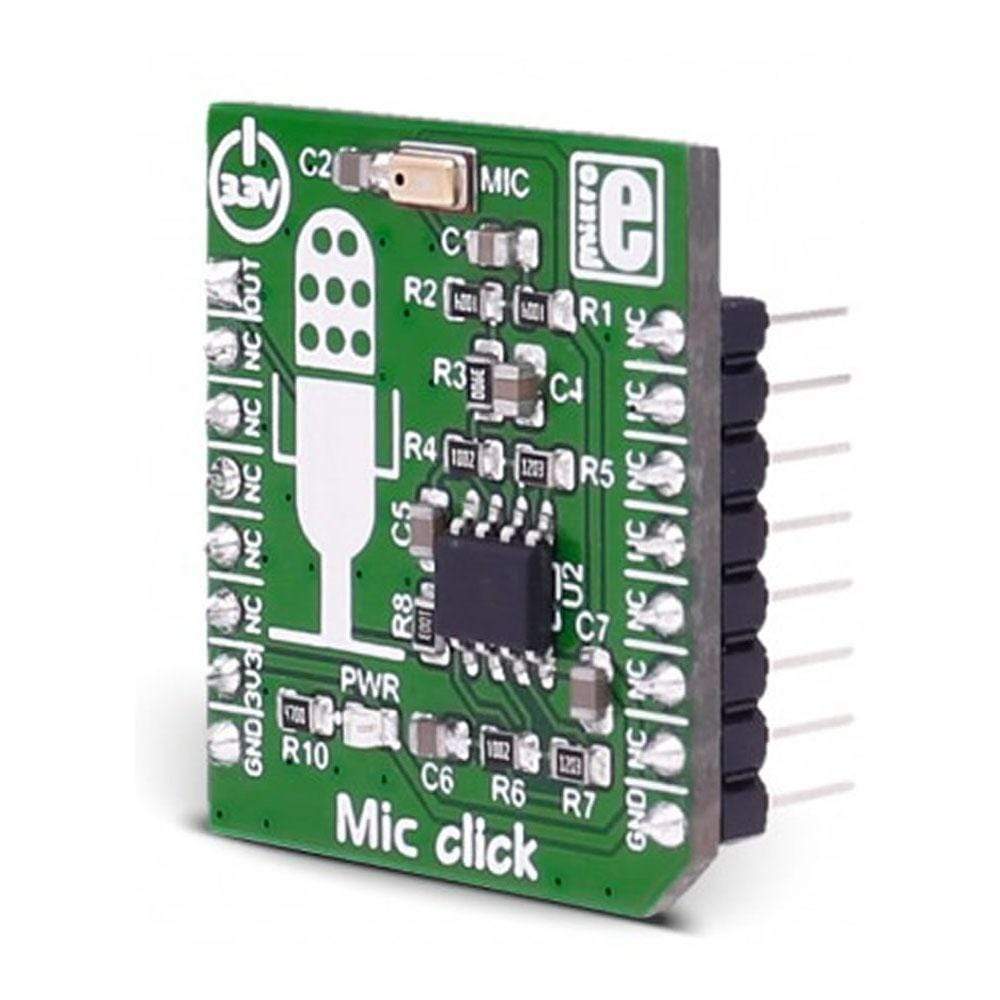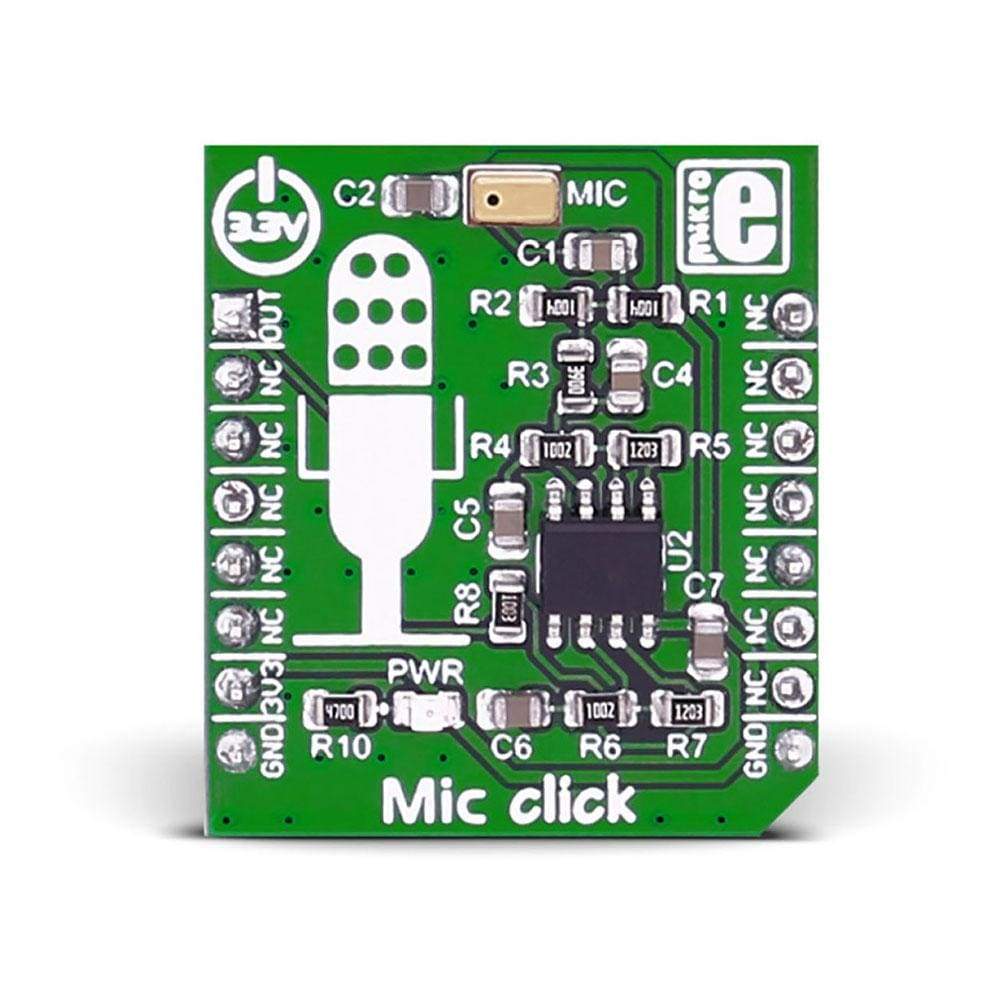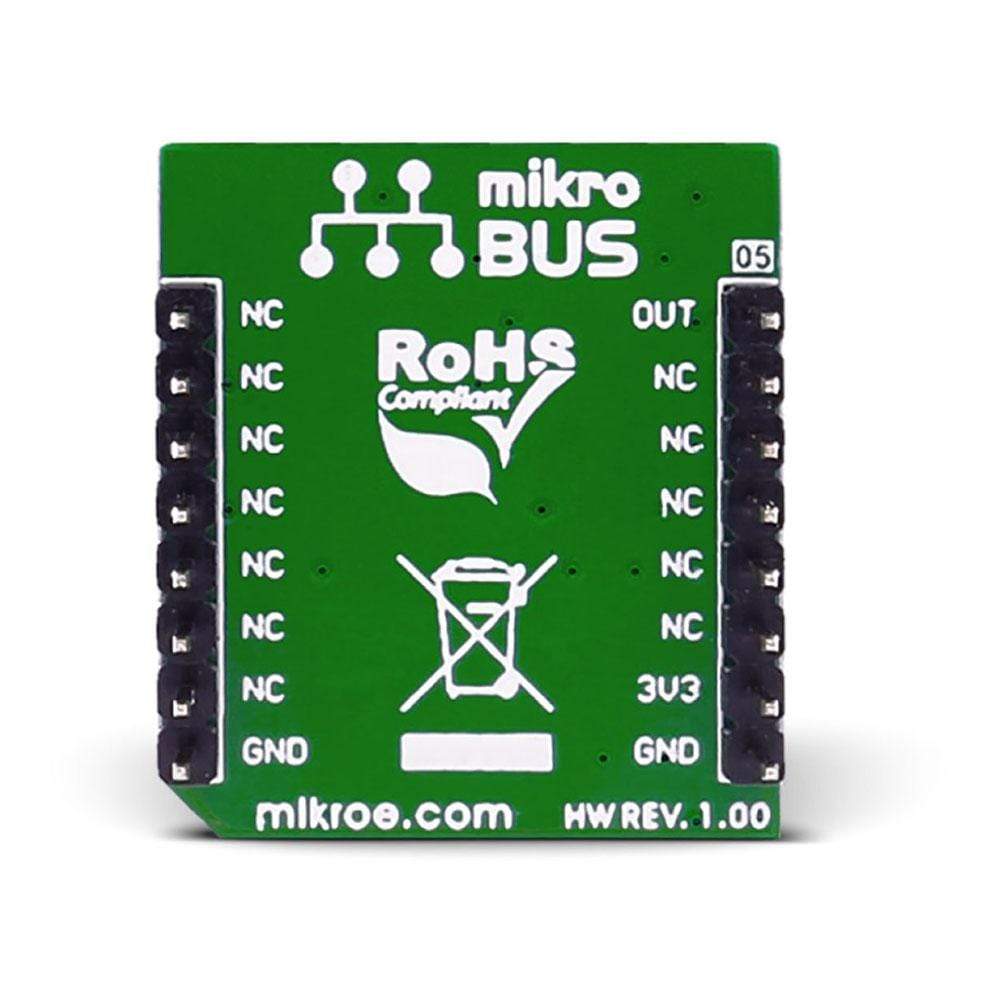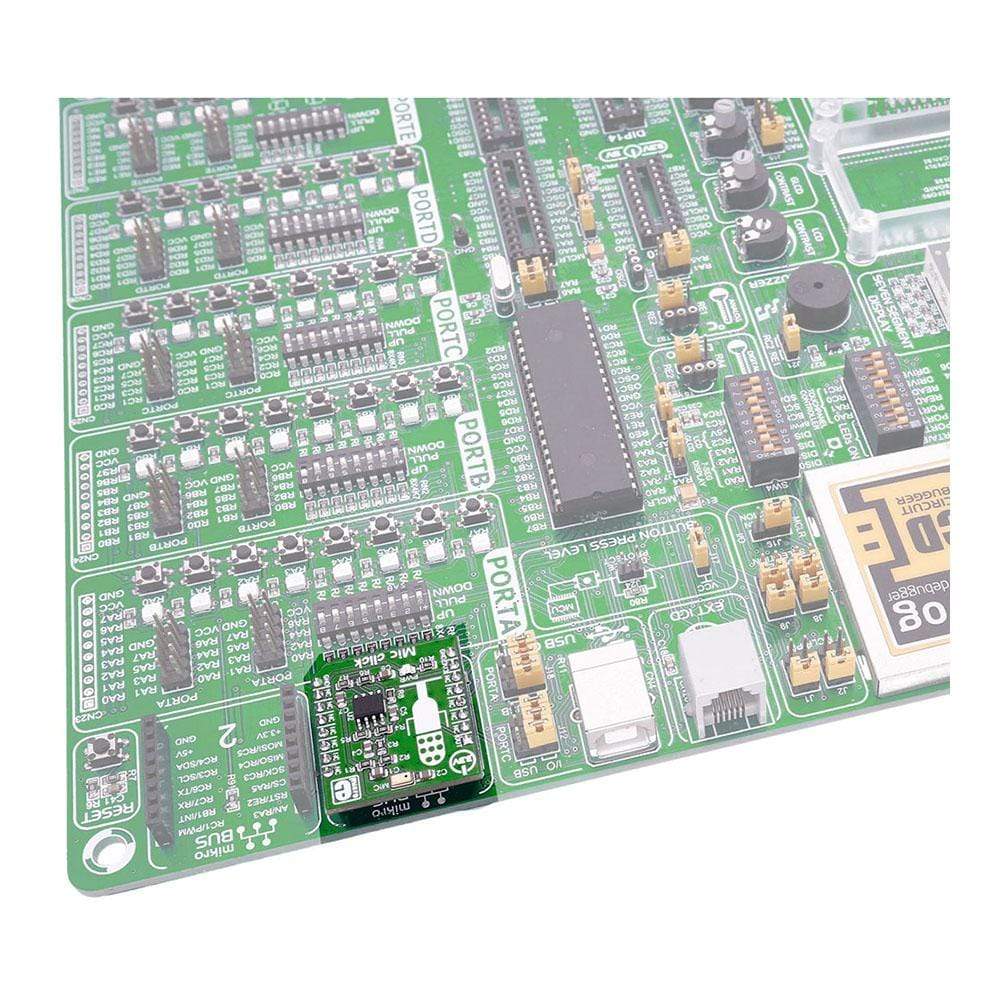



Overview
The MIC Click Board™ is based on the SPQ0410HR5H-B surface mount silicon microphone with maximum RF protection.
The MIC Click Board™ is designed to run on a 3.3V power supply. It communicates with the target microcontroller over the AN pin on the MikroBUS™ line.
Downloads
Le MIC Click Board™ est basé sur le microphone en silicium à montage en surface SPQ0410HR5H-B avec une protection RF maximale.
Le MIC Click Board™ est conçu pour fonctionner sur une alimentation de 3,3 V. Il communique avec le microcontrôleur cible via la broche AN de la ligne MikroBUS™.
| General Information | |
|---|---|
Part Number (SKU) |
MIKROE-2563
|
Manufacturer |
|
| Physical and Mechanical | |
Weight |
0.017 kg
|
| Other | |
Country of Origin |
|
HS Code Customs Tariff code
|
|
EAN |
8606018710386
|
Warranty |
|
Frequently Asked Questions
Have a Question?
Be the first to ask a question about this.




